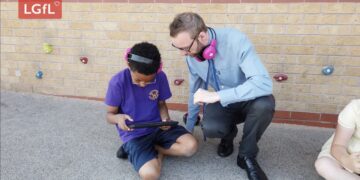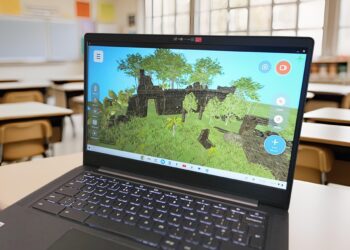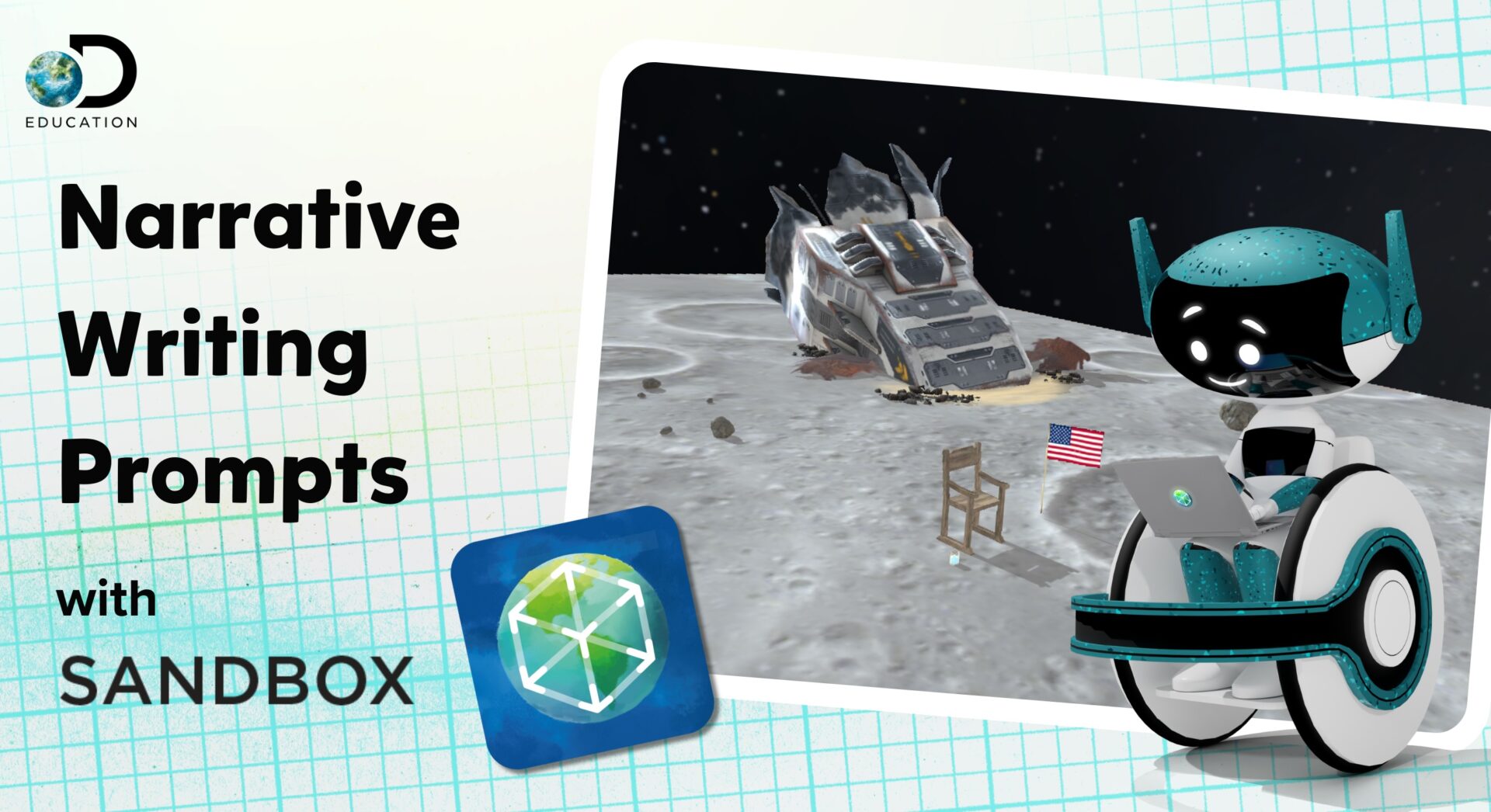Educators are always looking for ways to make curriculum-based learning more engaging and impactful and today they have an arsenal of digital learning tools to help. Enter Sandbox, a powerful 3D modeling tool from Discovery Education, designed to bring immersive learning to life on Chromebooks and iPads. This innovative tool makes standards-based instruction more immersive, interactive, and effective, transforming how students engage with history, science, geography, and more.
Immersive learning isn’t just for extra-curricular activities or special classroom moments—it should be integrated into daily instruction to maximize student engagement and comprehension. The power of 3D scene-building allows students to step inside historical events, explore scientific concepts, and connect with content in a way that is memorable, believable, and complete.
Why Immersive Learning Matters
Immersion in learning is crucial for creating deep, meaningful experiences. Engaging students through interactive, 3D environments helps them retain information better, develop empathy, and make real-world connections. Immersive learning has been shown to be especially effective when students can explore, manipulate, and experience educational content firsthand.
By integrating 3D scene-building into lessons, educators can:
- Increase student engagement by making lessons more interactive and hands-on.
- Improve knowledge retention by allowing students to explore concepts in a multisensory way.
- Develop critical thinking skills as students make decisions and interact with 3D models.
- Support varied learning styles, ensuring that all students, regardless of their preferred method of learning, can connect with the material.

Bringing Curriculum to Life
Sandbox is a dynamic learning environment that allows students to build and explore curriculum-aligned 3D scenes. The app provides hundreds of topical 3D models that tie directly to state standards, making it easy to align with lesson plans. Whether students are working on a Chromebook or an iPad, they can collaborate and create, building their understanding of key concepts.
How Students Can Use Sandbox
Chromebooks
Students can build their own scenes, organizing objects, structuring environments, and experimenting with concepts while seated and focused in a classroom setting. This helps with classroom management while fostering critical thinking and problem-solving.
iPads
Sandbox scenes can be explored in Augmented Reality (AR). An educator can check students' work and save it for later, or students can look at their classmates’ creations and step inside their own historical reconstructions, scientific simulations, or geographic explorations.
Even in classrooms where only one iPad is available, teachers can still integrate Sandbox AR into their lessons. Students can create 3D scenes on their Chromebooks and then take turns using the iPad to experience their work in life-size AR.
Example: Experiencing the Oregon Trail Like Never Before
A powerful example of Sandbox’s impact is its Oregon Trail experience, available in Discovery Education Experience, where students can visit Three Island Crossing in Idaho, 1836. Traditionally, students might learn about the Oregon Trail by reading a passage in a textbook and looking at a 2D map. With Sandbox, they can step into history.
Standards-Aligned Sandbox Lessons For Oregon Trail:
- Have students explore a life-size, animated 3D model of Three Island Crossing to better immerse themselves in the journey.
- Walk students through the historical scene in the life-size AR, experiencing the Snake River and wagons up close.
- Using what they see in the AR scene, have students role-play as pioneers and debate whether to cross the river or take a different path.
- Interacting with historical artifacts in 3D, have students consider what supplies the pioneers needed for their journey.
With Sandbox, students aren’t just learning history—they are experiencing it. They see the scale of the wagons, stand at the river’s edge, and confront the real decisions pioneers faced, gaining deeper historical understanding and stronger analytical skills.
Beyond History: Other Use Cases
While history is a prime subject for immersive scene-building, Sandbox also supports other curriculum subjects, including:
- Science: Students explore ecosystems, label diagrams, and investigate planetary systems in 3D.
- Geography: Classes can build and explore landscapes, walk across maps and visit life-size landmarks.
- ELA: Prompt storywriting and imaginative creative writing using detailed, atmospheric scenes that impart a sense of scale and realism. Use Scenes Mode on the iPad to create stories right from inside Sandbox.
Immersive Learning for Every Classroom
Sandbox proves that immersive learning is not just for special projects. It is a practical, free, everyday tool that transforms curriculum-based instruction into an interactive and engaging experience. Whether students are building on Chromebooks or stepping into history with iPads, 3D scene-building is revolutionizing education.
By integrating immersive learning into daily instruction, educators can create more engaging, memorable, and impactful lessons that prepare students for the world beyond the classroom.
Sandbox is Now Available for Chromebook!
The award-winning Sandbox app has landed on the Google Play Store for Chromebook devices, bringing immersive learning to even more classrooms!
The Chromebook version matches the beloved features of Sandbox: students can create stages, use a vast library of 3D models, explore pre-made scenes, and share their creations between devices. In Sandbox for Chromebook, students shrink themselves down into their scenes and explore them in an interactive, video-game style using a keyboard and mouse.
Sandbox for Chromebook is helping us work towards every student experiencing hands-on immersive learning and exploring the universe from inside their classroom.







